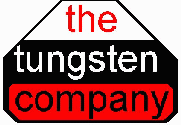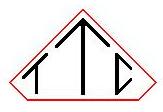 |
toll free1-866-788-6732 1-317-788-6732 Fax 1-317-788-6733 |
 We accept 
|
| home |
| why tungsten? |
| tungsten alloys |
| specifications |
| quote request |
| order form |
| order follow up |
| contact us |
| Specifications | |||
| 1. | Tungsten Alloys | ||
| a. | The most used specification is the old MIL-T-21014D. It is now under SAE but is essentially unchanged. It sets up four classes of materials based on tungsten content. Each class can be either the magnetic or non-magnetic version. Non-magnetic is defined as magnetic permeability being less than 1.05 mu. Class 1 is 90% tungsten; Class 2 is 92.5% tungsten; Class 3 is 95% tungsten and Class 4 has 97% tungsten. There are mechanical properties listed for each Class. The properties are derived from MPA bars | ||
| b. | Also used is AMS 7725C. It is similar to the 21014D specification but with lower density and mechanical properties | ||
| c. | Also, ASTM B787 is used and it is essentially identical to 21014D | ||
| 2. | Sintered tungsten | ||
| a. | Sintered tungsten has no active specifications. Almost all sintered tungsten is made from powder. It can be hot forged to shape for larger parts | ||
| b. | Thoriated and lanthanated version are available as well as standard doped versions. | ||
| 3. | Powders | ||
| a. | No common specification exists. Specify particle size,(distribution), particle size range and chemisrty. Also, add any other specifics necessary | ||
| 4. | Copper and Silver Tungsten Composites | ||
| a. | Most are specified by chemisrty or trade names | ||
| b. | ASTM B387 is a standard specification used | ||
| c. | Several company ones exist such as Hughes | ||
6504 Nathan Lane
Indianapolis, Indiana 46237
USA